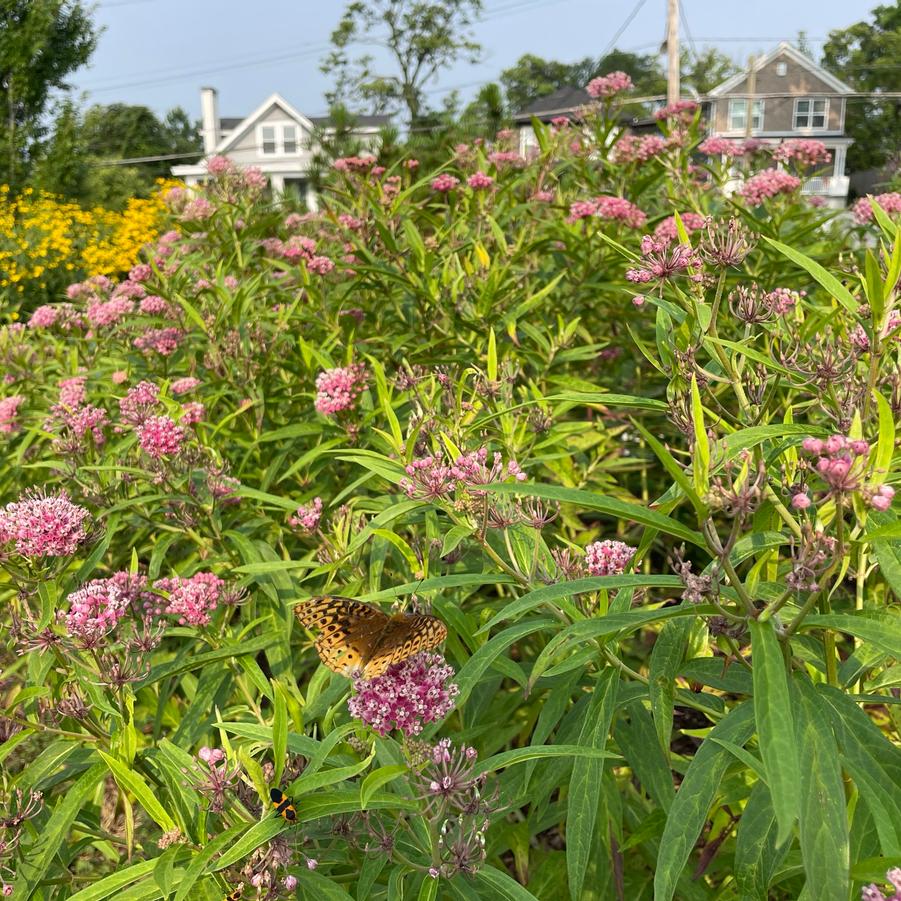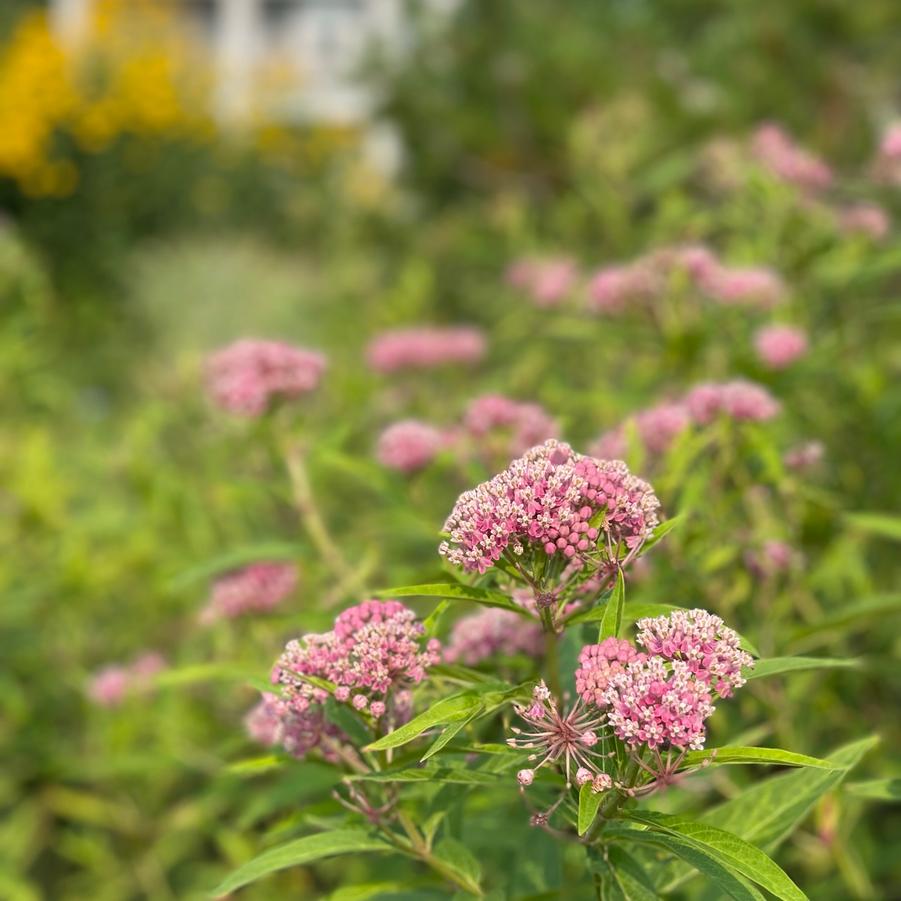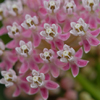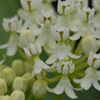



Plant Calculator
Enter the approximate length and width of the area you will be planting and click 'Calculate' to determine how many Asclepias incarnata 'Cinderella' you will need.
Correct and successful spacing is complex and depends on project conditions. We encourage you to call us at 877-ECO-PLUG for project specific recommendations and further assistance.
Asclepias incarnata 'Cinderella'
swamp milkweed
A virtually hassle-free perennial, offering three months of vanilla-scented, rose pink flowers in large, compact clusters from midsummer to early fall. Deadheading the flowers will stimulate another bloom cycle about a month after the first one. The flowers, which are heavily laden with nectar and pollen, are particularly attractive to hummingbirds, butterflies, bees, and other beneficial insects.
Following the fabulous flowers, typical milkweed seed pods develop which rupture to reveal seeds with long, silvery-white, silky hairs. These are great to use in dried flower arrangements.
This species grows in loose clumps by means of slowly creeping rhizomes. It is not invasive and can be safely mixed in with other perennials in the border. Asclepias incarnata is native to North America. -Walters Gardens

- Category: Perennial, Native
- Breeder: Walters Gardens, Inc.
- Hardiness Zone: 3-9
- Height: 3-5 Feet
- Spread: 1-3 Feet
- Spacing: 12-18 Inches
- Bloom Color: Pink
She's the belle of the ball! Sweetly scented with blooms of blush pink, Asclepias incarnata 'Cinderella' from Walters Gardens lasts longer in your garden than her namesake. A perennial with beauty, grace, and staying power, this wetland native does well in average garden conditions and is a pollinator favorite!
Click here to download technical information for growers:
Green Infrastructure
| • | Bioretention/Rain Garden |
Wetland Indicator Status
| • | Obligate Wetland (OBL) |
Plug Type
| • | Landscape Plug™ |
Propagation Type
| • | Tissue culture |
Additional Information about Asclepias incarnata 'Cinderella'
Asclepias incarnata can be recognized by its clusters of upturned deep pink flowers that bloom in mid-summer. These sit atop an elegant upright, branching stem with smooth willow-like foliage. Its height varies widely depending on soil moisture, soil nutrients and light conditions.
This wetland perennial is broadly distributed across the United States and Canada. Look for it occuring naturally in marshes, swamps, wet meadows and riparian areas.
We've observed that swamp milkweed stays true to its name as an excellent performer in the consistently moist soils of the bioswales and rain garden located in the lowest spots on our property. In our stormwater systems it happily accomodates temporary inundation after major rain events. Like many wetland perennials it will eventually spread rhizamtously to form a colony.
Like other Asclepias species, swamp milkweed is very popular with pollinating insects, attracting a diverse and ample array of butterfly, skipper, fly, wasp and bee species. Even hummingbirds are occasional visitors to its flowers! Its foliage is an important food source not only for the Monarch butterfly but also for the Swamp Milkweed Leaf Beetle and Large Milkweed Bug.
Growing & Maintenance Tips for Asclepias incarnata 'Cinderella'
Swamp milkweed, true to its name, prefers consistently moist soil, but performs admirably in average, well-drained gardens as well. Full sun is best and some shade is tolerated, though blooming time and color may suffer.
Gather bouquets of Asclepias all summer long; the long stems are wonderful for cutting and are long-lasting. Sear the ends of the cut stems over a flame to stop the milky sap from leaking out.


